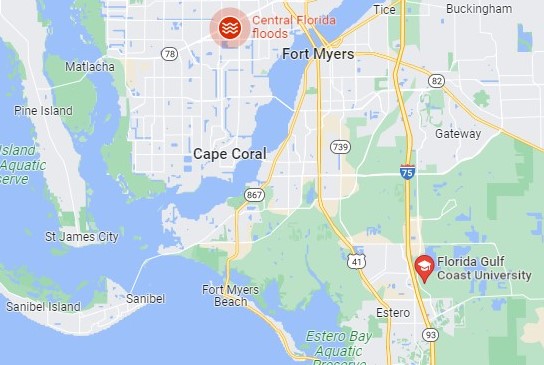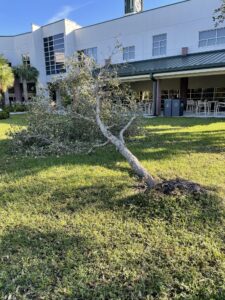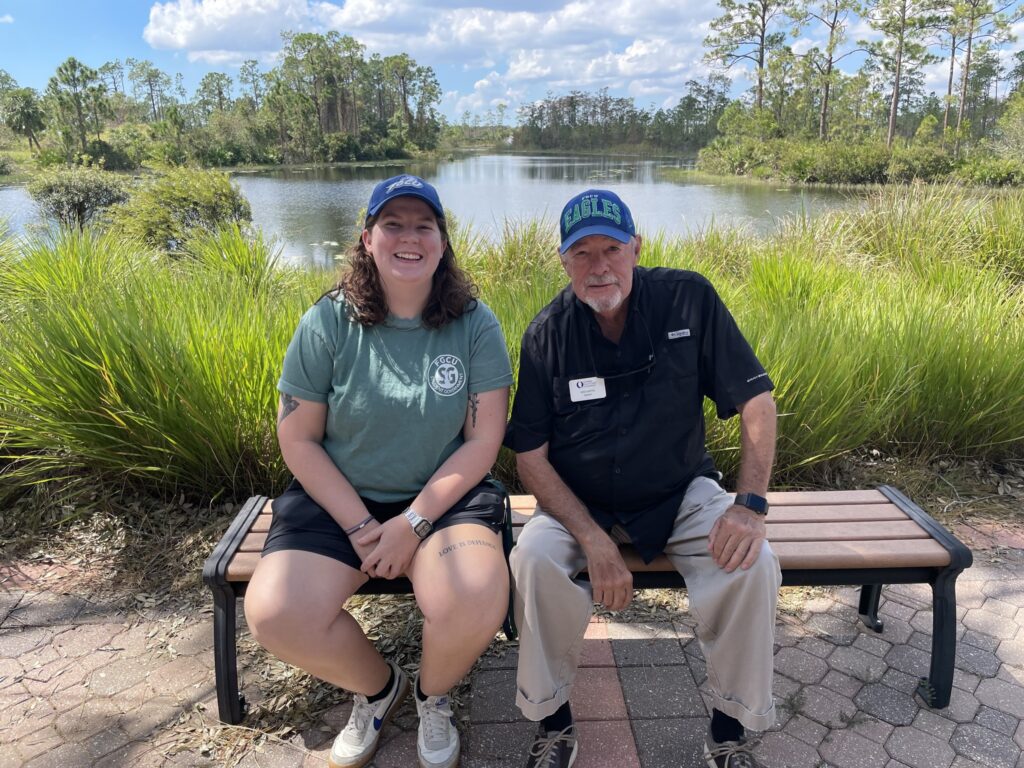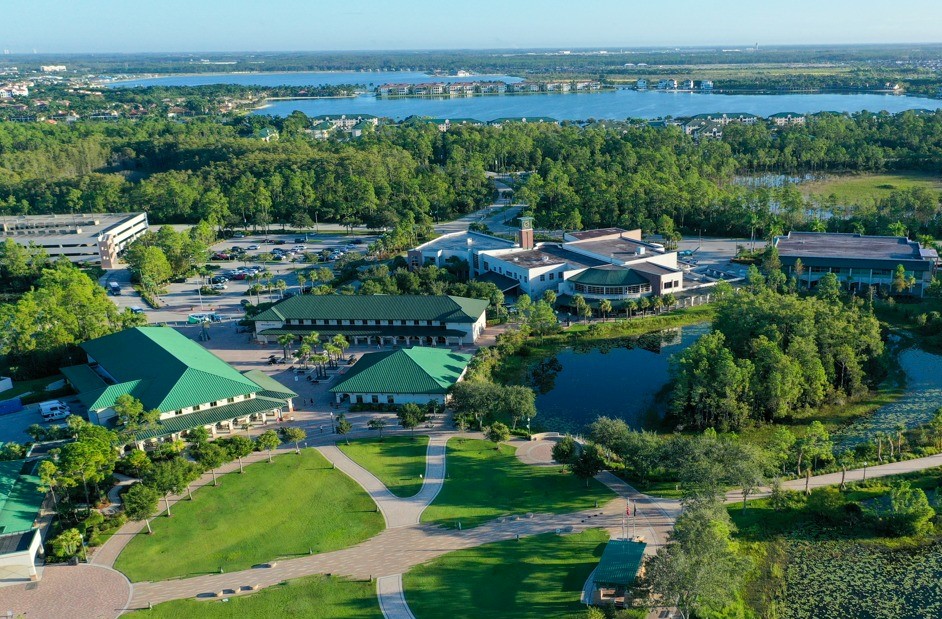 Nine miles. That is all that separates Florida Gulf Coast University from the Gulf of Mexico and all that cushioned it from the Category 4, 150-mph winds of Hurricane Ian when it hit two weeks ago. But that ever-so-small buffer, a slight position to the south of the eyewall’s center and its campus design may have been enough to shield it from the devastation that occurred on neighboring Fort Myers Beach, Cape Coral and Sanibel Island.
Nine miles. That is all that separates Florida Gulf Coast University from the Gulf of Mexico and all that cushioned it from the Category 4, 150-mph winds of Hurricane Ian when it hit two weeks ago. But that ever-so-small buffer, a slight position to the south of the eyewall’s center and its campus design may have been enough to shield it from the devastation that occurred on neighboring Fort Myers Beach, Cape Coral and Sanibel Island.

The storm ripped apart homes and the Sanibel Causeway, knocked out power for millions of residents and caused more than 100 deaths. Even though FGCU’s main campus survived the worst of Ian, its Vester Marine & Environmental Science Research Field Station in Bonita Springs was damaged by storm surge. Students, staff and faculty also were impacted. In addition to the horrific imagery, employees sustained damage to homes, cars and boats, and there are still many struggling with basic needs.
“Many members of our FGCU family have been severely impacted,” said Pamela McCabe, Coordinator of University Communications & Media Relations. “We launched a call center last week with a virtual check-in form for our students and employees to simply tell us how they were doing. Since then, we have lifted up employee- and student-focused teams to guide people through the recovery process with one-on-one attention.”
Through all of it, less than 14 days after the fifth largest hurricane to land in the United States crashed into Cayo Costa, FGCU reopened for business on Monday. It escaped with tree loss, a few windows being blown out and bleachers in its soccer stadium being crumpled, but it experienced no flooding. Still, it’s been a long 13 days.
“To say that we’ve been through a hard time with Hurricane Ian would be an understatement,” said President Mike Martin, who is scheduled to retire in late December. “But we are bouncing back. The campus is in good shape.”
Planning, advisories crucial in a crisis
Part of the reason FGCU is managing as well as can be expected is how quickly and decisively the team responded to this emergency. There have been no less than 18 major advisories put out by leaders at FGCU, from the time Ian was a tropical storm set to impact Cuba to Monday’s announcement that it had launched the Eagles in Need relief fund to assist all of those affected on campus. That fund will go to giving grants to those who lost personal items, and some who have lost close to everything. It also just developed a Hurricane Ian Disaster Leave Program for staff and faculty.
“It is to donate leave to a pool, which will be distributed among those who suffered severe hardship,” McCabe said. “Examples include displacement, the need to remediate flood damage to an employee’s home, loss of vehicle/transportation options due to flood, inability to physically travel to campus due to road closures or obstructions, and/or inability to work or telework due to local school or daycare closures.”

Beyond the emergency money and the initial messaging around safety and care, FGCU has tackled decisions with precision. It has posted alerts on the abundance of resources available to students and employees and kept them apprised of re-openings. It has made counselors available and stepped up shuttle services. It has kept its food pantry open to serve those in need. Though it had to shut down classes for 10 days, it says its semester is scheduled to finish on time because of its tireless crisis response, barring any further setbacks.
More from UB: From Dunk City to world impact, the rise of Florida Gulf Coast University
FGCU’s response—and ones like it in recent years from institutions such as Tulane University in New Orleans—provide excellent blueprints on how to respond to natural disasters. FGCU’s advisories alone show how an institution can get the word out to communities through detailed, yet streamlined briefs. Those two institutions have been through this many times, but the severity of storms such as Ian and Katrina can test a university’s plan to the core. How prepared is your campus to respond to a hurricane, flood, tornado, earthquake or other crisis? Was it prepared at all for COVID-19 in March 2020?

Because of the latest hurricane, the Department of Education reiterated to institutions the vast amount of resources available to them during emergencies. They include:
- Federal Student Aid for domestic and foreign Title IV-eligible colleges and universities.
- Assistance on potential grant adjustments to activities and budgets through the Office of Postsecondary Education.
- The Higher Education Emergency Relief Fund’s Emergency office, which can be used toward “exceptional need, which may include needs that have arisen as a result of the recent hurricanes. Institutions should carefully document how they determine exceptional need. Institutions cannot direct or control what students use their emergency financial aid grants on as funds must be provided directly to students.”
- The Readiness and Emergency Management for Schools’ Technical Assistance Center helps can campuses create strong preparedness plans, as well as reacting in emergencies
- Project SERV, which can get short-term funding to colleges “that have experienced a violent or traumatic incident to assist in restoring a safe environment conducive to learning.”







